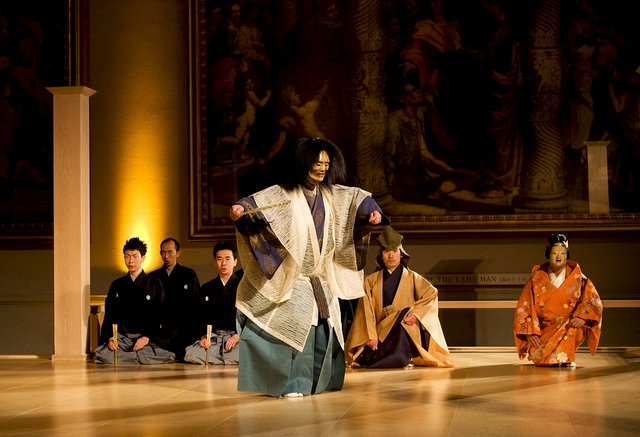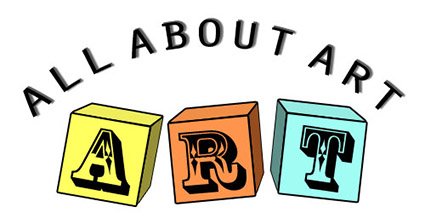3 Traditional Japanese Theater That Is Still Exist Until Now
Japanese theater has a long and rich history, but the idea of visiting a theater scene in a foreign country seems a bit creepy. With the fear of the difficulty of following the story on the stage because of the differences in language and culture, not a few would-be audiences would not risk being disappointed and ultimately decided to miss a great opportunity to enjoy one of Japan's great works of art, much less because there are actually many theaters which has facilities to accommodate international audiences and make the performances understandable to anyone. Now Today i will discuss about 3 traditional Japanese theater that is still exist ubtil now. Let's check it out....
Bunraku
Bunraku is a traditional Japanese puppet theater. Also known by the name of ningyo joruri, the first bunraku staging was held in Osaka in 1684. Bunraku not have much in common with the western puppet theater. The dolls, whose height can reach 1.5 meters, are driven by three puppeteers whose movements should be harmonious in order to keep the doll's characters alive. The puppeteers is in charge of moving the right hand and the head of the doll, the second puppeteers moves the left hand, and the other puppeteers is in charge of moving the legs. The three puppeteers on duty on stage, so that can be clearly seen by the audience. In order not to deceive staging, the mastermind moving the left hand and feet wearing a black costume, complete with a hood. Only the puppet master did not wear a hood, as a symbol of years of practice so as to achieve this honorable position.

These sophisticated puppet heads are made of wood, and their expression can change when the story in the play becomes supernatural. On the stage there is the singer (tayu) and shamisen players, both of which are also an important part of staging. There is only one tayu in one performance, and it is his responsibility to make the doll live. The singer is the voice of the puppet with various types of sounds to increase the emotional impact on the staging. A very challenging, exhausting job.
Bunraku has many similarities to the story with kabuki, is famous for stories about couples suicide that are not intended for children, although using puppets in the staging. If kabuki offers an opportunity for the cast to shine, the bunraku is a more loyal theater form. National Bunraku Theater in Osaka has a guide with a listening tool for international guests to follow the storyline, as well as a source of information about important symbolic meanings as well as the music that appears in the play, in order to be understood and appreciated.
For bunraku international fans interested in learning more about this unique art, Tonda Puppet Troupe in Shiga Prefecture has an international student exchange program that you can follow.
Noh
Starting in the 14th century, noh is the oldest form of theater still staged to this day and part of UNESCO's "Intangible Cultural Heritage". Unlike kabuki, noh has never been an entertainment for the public, and is only aimed at upper class citizens. Shogun Ashikaga Yoshimitsu is the first of many great fans and a devoted supporter of noh. During the Tokugawa Period (1603-1868), Noh defended his role as a source of entertainment for the elite. Over the centuries, the language and style of delivery from many noh performances have been codified, even today.

Traditionally, the stage of noh takes a very long time. One program consists of five different stages, with interspersed comedy kyogen at the turn of the round. Although the presentations tend to be shorter (after all, the present audience is no longer the feudal lords and the servant entourage and slaves serving the bosses while they are enjoying the theater), not much has changed from the show. Noh is a staging that is played slowly, tending to resemble a ceremony, where emotions are delivered with gestures that are modeled in a neat style.
Codification in staging noh further emphasized by the players who use the mask, one of the important things of the show noh. These masks represent women, children, parents or ghosts, and their expression can change only by moving the head slightly. From the first the characters were always played by men, and although theoretically women could have played in the present-day noh staging, the same tradition continues to apply in this ancient theater.
Noh performances often adopt traditional fairy tales, including supernatural elements. The protagonist (shite) and his opponent (waki) are accompanied by a choir (jiutai) containing 6-8 people and a group of musicians (hayashi) in traditional kimono and hakama costumes, playing flutes and drums.
Since there is no curtain in the theater of noh and lighting is usually always lit during the performance, the audience can see the players coming in and out of the stage through a bridge (hashigakari). Although there is no artificial setting, the actors who wear elaborate costumes are equipped with properties such as fans. Theater enthusiasts can watch noh at Tokyo National Noh Theater, Ohtsuki Noh Theater in Osaka, or with some luck and struggle, on one of the beautiful outdoor platforms in the temples.
Kabuki
Similar to noh, kabuki is also part of the "Cultural Heritage of Non-Humanity". Funnily enough, what is currently presented by this most famous form of Japanese theater grew as opposed to the "rigidity" of noh. Kabuki was created to "surprise" the audience with more modern and vibrant stories. If noh is a high-level art in the Tokugawa Period, kabuki is a marker of the birth of popular culture. People from different classes mingle in the theater. Of course, those who hold a shogun no longer a fan of this theater performance.
In the early days of its appearance after the first staging of 1603, kabuki was a region of women. A mix of music, drama and dance, kabuki women only lasted for 26 years before finally banned in 1629 for being too erotic. The solution offered (substituting female actors with young men) did not solve the problems closely related to kabuki, thus affecting the dominance of older male performers, and the changing focus of the dance performances into dramas.
Although some female cast members still exist in Japan to this day, kabuki is still associated with the men who play all the roles. The men who play the role of women are called onnagata, and they are the main stars of kabuki performances. In elegant and elegant costumes, the kabuki performers do not wear masks, but wear distinctive white makeup with certain colors (red for heroes, and blue for criminals). Though more modern than noh in the Tokugawa period, the kabuki you can see today is slowly becoming much more stylish. To build character, the actors demonstrate the excessive bold poses called noodles, which if done correctly and impressively, the audience will shout the name of the actor.
Today kabuki is also regarded as high-class art, but kabuki is always known for the amazing use of special effects, such as rotating stage, trap doors, elevators and other mechanical objects for surprising effects and sudden changes. With spices resembling modern blockbuster films, kabuki presents diverse stories, from historical ones ("The 47 Ronin") to everyday life. Traditionally, kabuki has shared many stories with my bunraku, as both are mutually influential. Over the years, many of my bunraku performances have been adapted to kabuki, and vice versa.
International guests can enjoy kabuki performances at the Kabuki-za Theater in Ginza, Tokyo, which uses a helpful sub-text system instead of the usual audio guides. For kabuki fans who prefer the traditional setting, Kanamaru-za aka Konpira Grand Theater in Kotohira staging in the remains of the oldest kabuki theater in Japan for a month of the year, usually when spring. In other seasons, the theater is open to the public (including the backstage), promising an amazing experience for theater lover.
And that was about 3 traditional Japanese theater. Hope you guys like it and increase your knowledge about various theater arts that exist in japan. Keep follow @AllAboutArts for more interesting and informative things about art, because there is still a lot of information or articles about art that I will share. See you in my next post guys...
